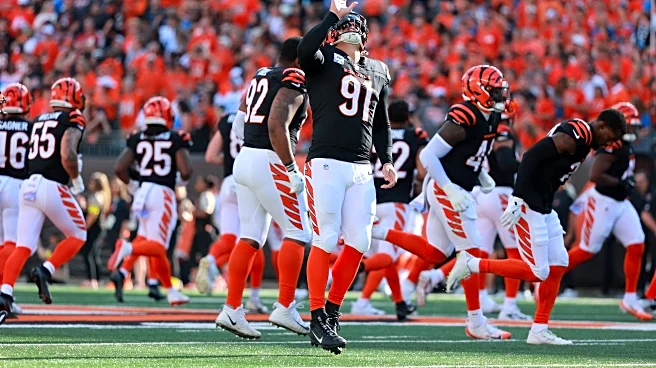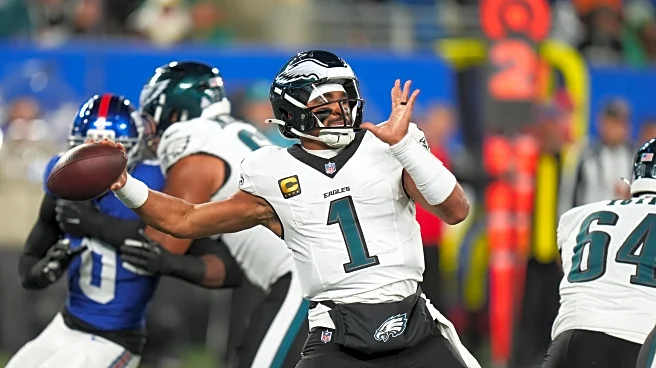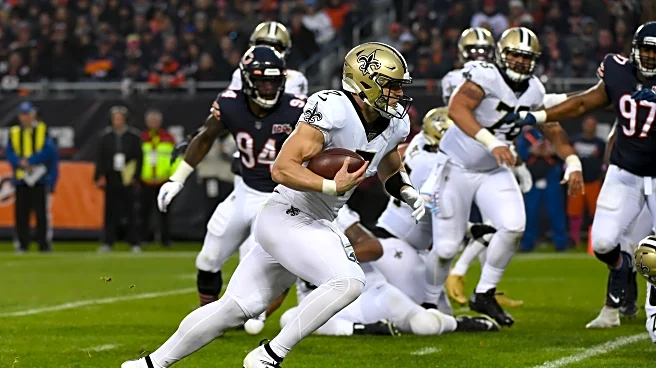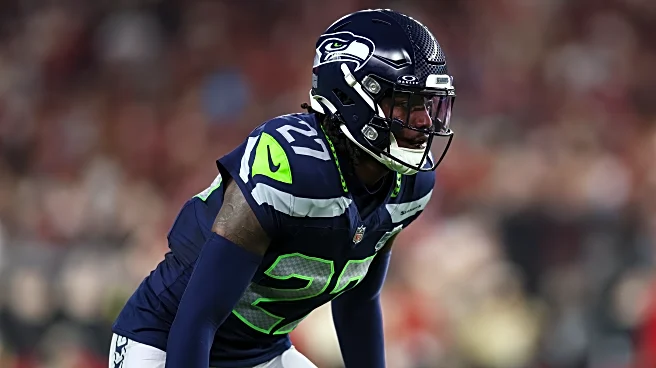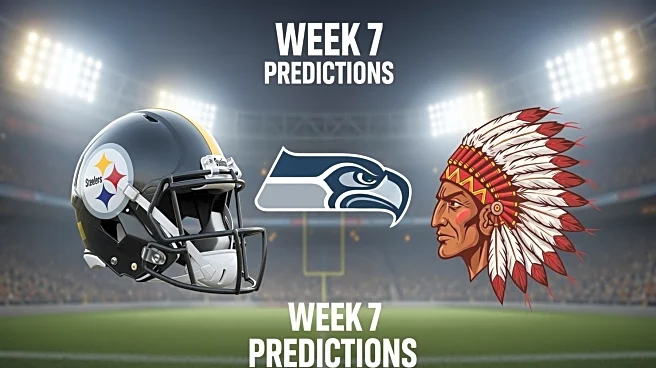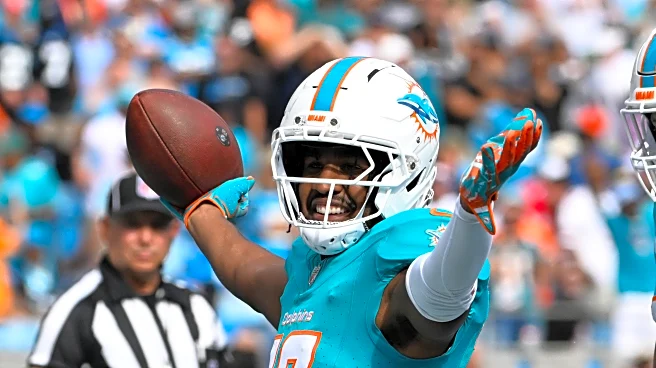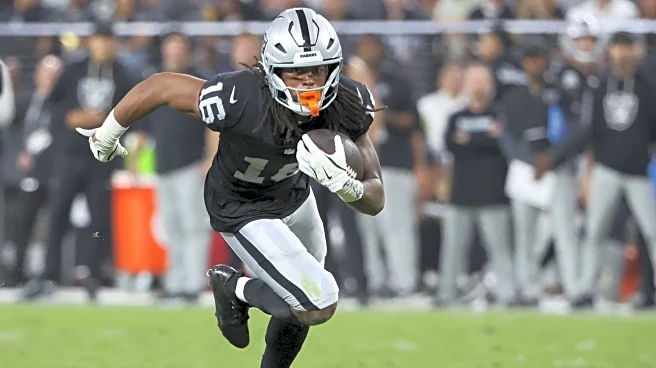What's Happening?
As the 2025 NFL trade deadline approaches, teams are actively exploring strategic trades to bolster their rosters. The Chargers, Giants, Seahawks, Lions, and other teams are considering various player
swaps to address injuries and improve their chances for the season. Notable proposals include the Chargers acquiring running back Jerome Ford from the Browns, the Giants trading for wide receiver Jakobi Meyers from the Raiders, and the Lions targeting pass rushers Trey Hendrickson and Jaelan Phillips. These trades aim to fill gaps left by injuries and enhance team performance as the season progresses.
Why It's Important?
These potential trades could significantly impact team dynamics and playoff prospects. For instance, the Lions' acquisition of Hendrickson and Phillips would strengthen their pass rush, crucial for their Super Bowl aspirations. The Giants' move to acquire Meyers could provide quarterback Jaxson Dart with a reliable target, enhancing their offensive capabilities. Meanwhile, the Chargers' trade for Ford addresses their running back shortage due to injuries. These strategic decisions reflect teams' efforts to adapt to mid-season challenges and optimize their rosters for competitive advantage.
What's Next?
As the trade deadline nears, teams will finalize negotiations and execute trades to meet their strategic needs. The outcomes of these trades will be closely watched, as they could alter playoff trajectories and influence future team strategies. Teams like the Bengals, facing challenges without key players like Joe Burrow, may also consider trades to secure future draft picks and financial savings. The decisions made in the coming days will shape the remainder of the NFL season and set the stage for offseason moves.
Beyond the Headlines
These trades highlight the complex decision-making processes within NFL teams, balancing immediate needs with long-term goals. The willingness to trade draft picks for short-term gains underscores the competitive nature of the league and the pressure on teams to perform. Additionally, these moves reflect broader trends in player valuation and team-building strategies, as franchises navigate the challenges of injuries and roster management.




